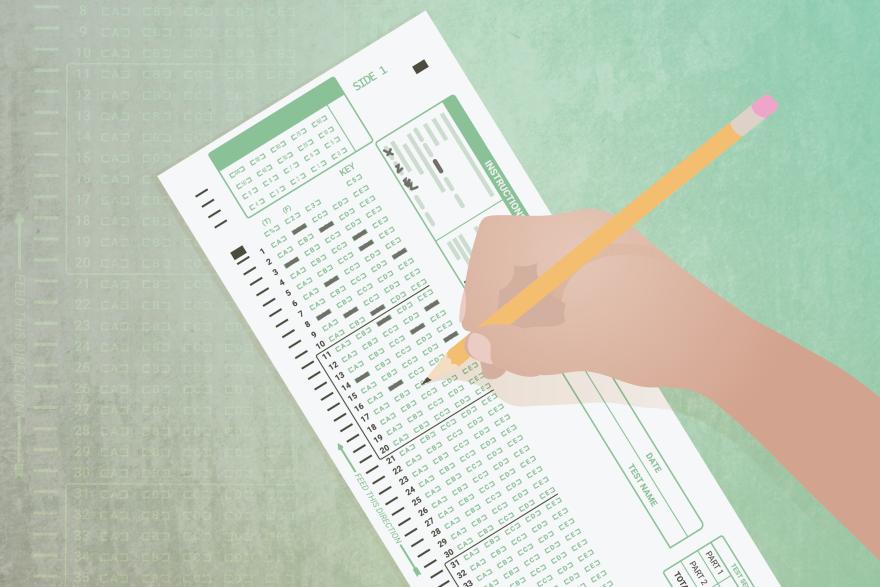Missouri schools are getting a different kind of report card from the state. It's now color coded instead of offering a numerical grade.
The Annual Performance Report is the state’s way of showing how school districts are doing. After years of providing a percentile score that conveyed how school districts ranked, this year’s APR instead uses color-coded bar graphs that measure not only how students did on state tests, but how much they improved.
State education officials say this new format is more nuanced. Even though the reports look different, the Department of Elementary and Secondary Education said it used the same worksheet to calculate performance as in the past.
Education officials “decided that our best course of action for this year would be to provide the data so that you can actually look at, ‘How are our kids performing?’ and focus in on the areas that our communities are finding of great value,” said Commissioner Margie Vandeven.
Look up your district or school’s Annual Performance Report on the Missouri Department of Elementary and Secondary Education website.
This guide explains how to navigate the data portal.
Susan Pendergrass, an education policy researcher for the libertarian-leaning Show-Me Institute, isn’t convinced.
“They never gave labels to schools even under the APR system; they only gave them the number. Now the number’s gone, so now what do we know? Now we know even less,” said Pendergrass, who has been critical of Missouri’s school grading system.
Vandeven defended the changes, saying this gets APR back to its intended purpose. Yet she acknowledged the desire of some to still see a score attached, and described the changes as a “temporary shift” that focuses more on student data than the points.
“It’s also intended to better inform future policy decisions,” she said.
APR is the largest factor in how the Missouri State Board of Education determines accreditation for school districts. (Charter schools, which are independently run public schools, receive an APR but are not given an accreditation label by the state school board.)
(Look up your district or school’s Annual Performance Report)
School administrators learned the changes were coming back in May, but many said they were still trying to digest this new way of looking at the data.
“Even for me as a superintendent, I'm still looking at this and trying to figure all of this out,” said Kansas City Public Schools Superintendent Mark Bedell. “I think it is going to be difficult to really calculate what an APR is for the common person.”
That’s why Leslie Kohlmeyer tells parents not to bother.
“I never tell parents to look at the APR score. APR isn’t for parents. It’s a report card for the principal,” said Kohlmeyer, who works for Show Me KC Schools, a nonprofit that helps parents navigate school choice.
Still, DESE distributed talking points to school leaders to help explain the information to parents.
APR measures student achievement, as well as growth and progress. When parents go to DESE’s public portal and look at their child’s school, they’ll see:

- The bar graph on the left measures growth: whether individual students made the gains the state would expect year over year.
- The bar graph in the middle measures status, which is another word for achievement: a three-year average of how well students in the district scored on state tests.
- The bar graph on the right measures progress: how fast the district is closing the gap between where students are and where the state wants them to be.
Schools also are graded on attendance, graduation rates, college and career readiness, attendance and graduation rates.
Kansas City Public Schools parent Lisa Gooden liked that the new report cards put the focus on student growth, not test scores.
“I think seeing it on this linear model and color coded and left to right, I think that is easier to read than a percentage,” Gooden said.
But she doesn’t think some of the terminology is intuitive. For instance, she struggled to understand what it means when a school’s test performance is on the “floor,” a term used when a student or school falls below the state’s expectation for learning.
Test scores stay flat
For the first time in more than half a decade, it’s possible to say how much students improved their reading and math proficiency. And the answer is they didn’t.
More than half the students in the state scored below grade level on state reading and math exams for the second straight year. The percentage of students who passed the Missouri Assessment Program Test stayed virtually the same, with about 49% of students scoring in the “proficient” or “advanced” range on the reading test and 42% of students in those categories — which constitute a passing grade — on the math test.
State science scores will not be made public until next month, and the state implemented a new social studies exam this past spring, so scores will not be calculated until next year.
Because of legislative demands and furor over Common Core academic standards, students in Missouri took four different tests in five years. Now in the sixth year of that churn, students took the same reading and math tests for two consecutive years, meaning that both educators and parents can directly compare their scores.
“We, like them, look forward to a stabilized assessment system,” Vandeven said. “We do caution that one data point does not make a trend.”
Loading...
Follow Ryan and Elle on Twitter: @rpatrickdelaney; @ellemoxley
Send questions and comments about this story to feedback@stlpublicradio.org


